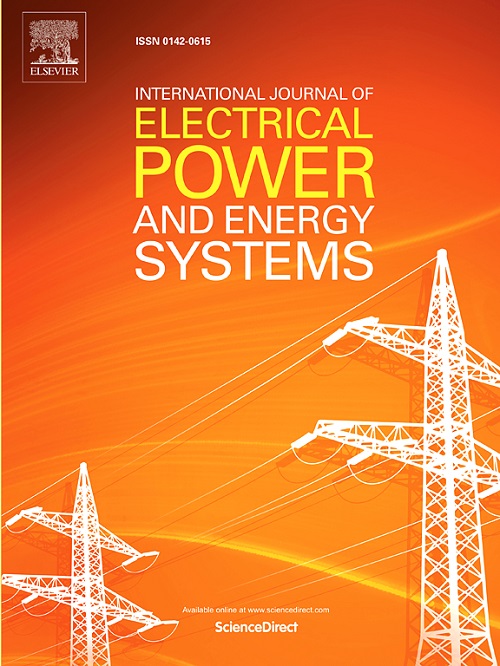A novel fault location method for multi-terminal transmission lines based on composite analysis of time-frequency fault traveling waves
IF 5
2区 工程技术
Q1 ENGINEERING, ELECTRICAL & ELECTRONIC
International Journal of Electrical Power & Energy Systems
Pub Date : 2025-04-01
DOI:10.1016/j.ijepes.2025.110600
引用次数: 0
Abstract
In order to solve the problems such as complex fault branch determination, large fault location error and low error tolerance of the existing multi-terminal transmission line (MTTL) fault location method, due to the influence of fault traveling wave (FTW) wave head (WH) time extraction accuracy and network topology structure, a novel fault location method for MTTLs based on composite analysis of time–frequency FTW is proposed. The FTW location mechanism for MTTLs is firstly revealed. According to the characteristic that the FTW natural frequency (NF) is inversely proportional to the transmission distance, the fault branch determination vector is defined, and the corresponding principle is proposed to determine the fault branch. On this basis, the multi-terminal FTW data with adaptive FTW velocity capability are surface-fitted by using the characteristic that the transmission time of FTW is directly proportional to the transmission distance, so as to achieve fault precise location. The PSCAD/EMTDC simulation and laboratory test results show that this method has a simple fault location process and high location accuracy under various fault conditions, effectively reduces the influence of harsh environment, FTW velocity inhomogeneous and WH time extraction error on the location results, and has high error tolerance.
基于时频故障行波复合分析的多端传输线故障定位新方法
针对现有多端传输线(MTTL)故障定位方法由于故障行波(FTW)波头(WH)时间提取精度和网络拓扑结构的影响,存在故障分支确定复杂、故障定位误差大、容错性低等问题,提出了一种基于时频FTW复合分析的多端传输线故障定位新方法。首先揭示了mttl的FTW定位机制。根据FTW固有频率(NF)与传输距离成反比的特点,定义了故障支路确定向量,并提出了相应的故障支路确定原则。在此基础上,利用FTW传输时间与传输距离成正比的特性,对具有自适应FTW速度能力的多终端FTW数据进行曲面拟合,实现故障精确定位。PSCAD/EMTDC仿真和实验室测试结果表明,该方法故障定位过程简单,在各种故障条件下具有较高的定位精度,有效降低了恶劣环境、FTW速度不均匀性和WH时间提取误差对定位结果的影响,具有较高的容错性。
本文章由计算机程序翻译,如有差异,请以英文原文为准。
求助全文
约1分钟内获得全文
求助全文
来源期刊
CiteScore
12.10
自引率
17.30%
发文量
1022
审稿时长
51 days
期刊介绍:
The journal covers theoretical developments in electrical power and energy systems and their applications. The coverage embraces: generation and network planning; reliability; long and short term operation; expert systems; neural networks; object oriented systems; system control centres; database and information systems; stock and parameter estimation; system security and adequacy; network theory, modelling and computation; small and large system dynamics; dynamic model identification; on-line control including load and switching control; protection; distribution systems; energy economics; impact of non-conventional systems; and man-machine interfaces.
As well as original research papers, the journal publishes short contributions, book reviews and conference reports. All papers are peer-reviewed by at least two referees.

 求助内容:
求助内容: 应助结果提醒方式:
应助结果提醒方式:


